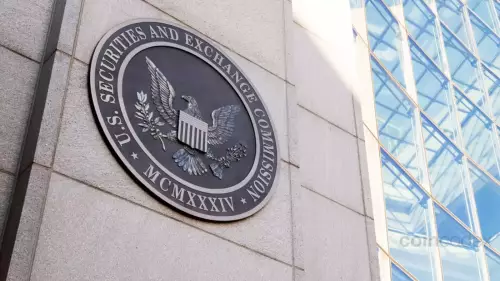Hyperliquid's USDH stablecoin launch sparks intense competition, showcasing the power of community and the future of decentralized finance.

Hyperliquid's USDH Stablecoin Race: High Stakes and Community Power
The race to become the issuer of Hyperliquid's first native stablecoin, USDH, has been a whirlwind! With billions in stablecoin flows at stake, it's a battleground of innovation, community sentiment, and strategic maneuvering.
The Players and Their Pitches
Hyperliquid, a decentralized exchange making waves with its high trading volume and lean team, is poised to launch USDH, a dollar-pegged asset crucial for its ecosystem. Several companies threw their hats in the ring, each with a unique approach:
- Native Markets: Focused on being Hyperliquid-native, pledging to mint USDH directly on HyperEVM and share reserve yield. Their odds were looking pretty good for a while there.
- Paxos: Emphasizing regulatory compliance and integration with platforms like PayPal and Venmo. They're the seasoned pros in the stablecoin game.
- Sky: Championing multichain functionality via LayerZero, aiming to make USDH accessible across different networks from the get-go.
- Frax Finance: Proposing a partnership with a federally regulated US bank, backing USDH with tokenized US Treasurys. Giving everything back to the community was their mantra.
- Agora: Partnering with VanEck as asset manager, committing 100% of net revenue to HYPE buybacks. They weren't shy about voicing concerns regarding potential conflicts of interest.
- Curve, OpenEden, and BitGo: Late entries adding further intrigue to the competition.
Ethena's Exit and the Rise of Community Voice
One of the most surprising turns was Ethena Labs withdrawing its bid. Founder Guy Young acknowledged the community's concerns about Ethena's alignment with Hyperliquid's native ethos. This move highlights the growing influence of community sentiment in decentralized governance. It's a reminder that in DeFi, it's not just about size, but about genuine commitment and alignment with the ecosystem.
Hyperliquid Outshining Traditional Finance
Hyperliquid isn't just making waves in the DeFi space; it's giving traditional finance giants a run for their money. Its annualized net income surpasses that of Nasdaq, with a fraction of the workforce. This demonstrates the efficiency and potential of decentralized exchanges to compete with established players.
The GENIUS Act and the Future of Stablecoins
The broader context includes the GENIUS Act, signaling a US push for dollar-pegged stablecoins. Projections estimate the stablecoin market could explode to $2 trillion by 2028, underscoring the importance of liquidity, interoperability, and regulatory alignment.
My Two Satoshis
The USDH race is a microcosm of the broader DeFi landscape. It showcases the power of community, the potential for innovation, and the ongoing evolution of decentralized governance. Hyperliquid's success highlights the efficiency gains possible through blockchain technology. While predicting the winner of the USDH vote is tough, it's clear that the community's voice will play a crucial role. It's about more than just a stablecoin; it's about shaping the future of finance.
The Bottom Line
So, who will win the USDH crown? Only time will tell! But one thing's for sure: this competition is heating up, and it's an exciting time to be watching the Hyperliquid ecosystem evolve. Buckle up, folks, because the future of DeFi is looking wild!
Disclaimer:info@kdj.com
The information provided is not trading advice. kdj.com does not assume any responsibility for any investments made based on the information provided in this article. Cryptocurrencies are highly volatile and it is highly recommended that you invest with caution after thorough research!
If you believe that the content used on this website infringes your copyright, please contact us immediately (info@kdj.com) and we will delete it promptly.














































































